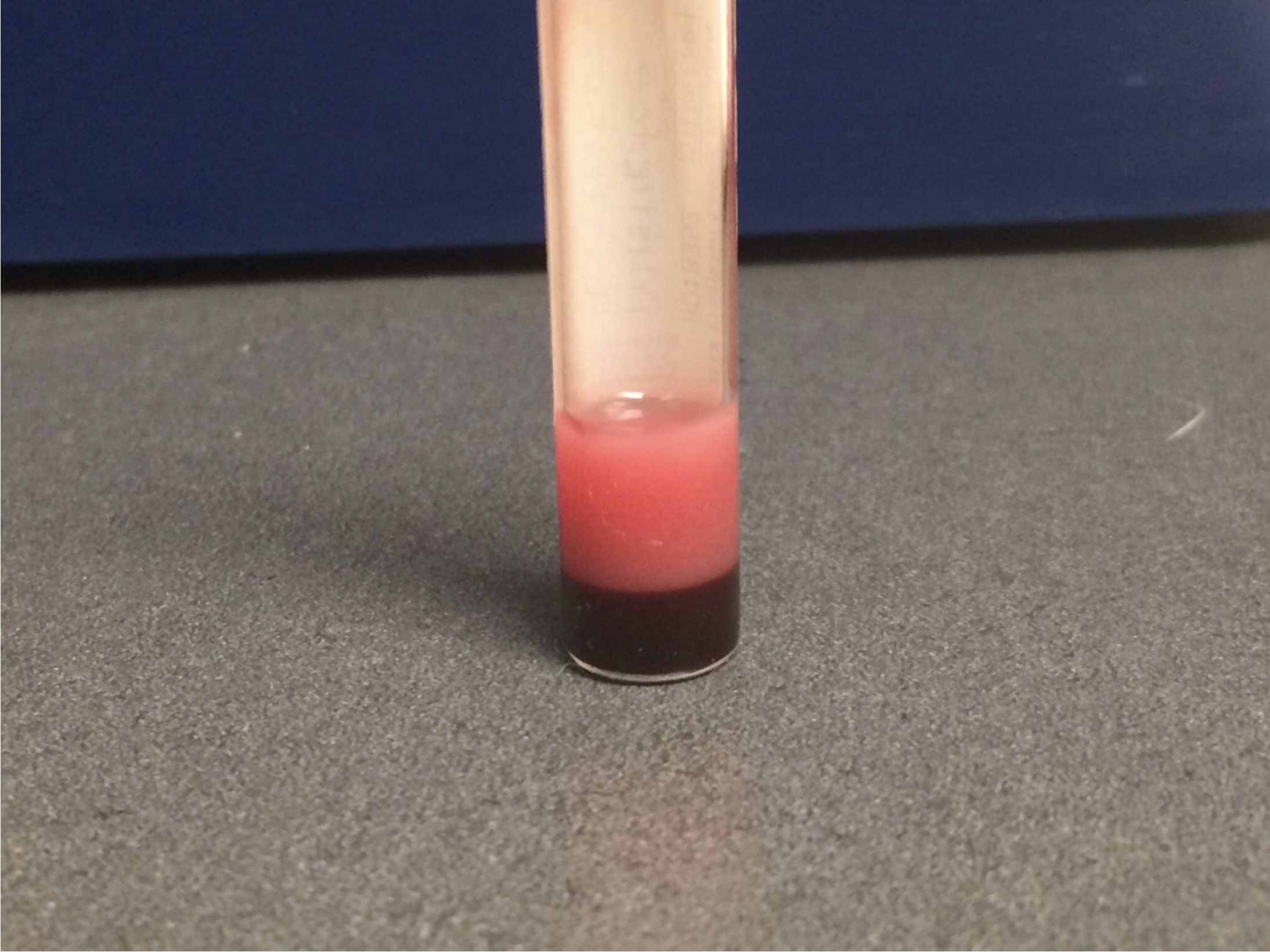Lipemia
Chylomicrons and very low-density lipoproteins (protein-bound triglycerides produced by the liver) are sufficiently large that they make the plasma or serum visibly lipemic (milky and turbid), a phenomenon which may be noted when blood is collected from monogastrics shortly after a large high-fat meal (Fig. 13.2). This is called lipemia (in contrast to hyperlipidemia, described below). It should be noted, however, that these definitions are not consistently applied in the veterinary literature and may have different meanings, particularly within equine practice. Whole anticoagulated blood containing high levels of chylomicrons, with or without very low-density lipoproteins, may appear bright pink when well mixed, commonly referred to as a “tomato soup” appearance. If only chylomicrons are increased in serum, a white “cream” layer will form upon undisturbed refrigeration or centrifugation of the sample, and the serum below the “cream” layer will be clear. If both chylomicrons and other very low-density lipoproteins are present, the entire serum will be lactescent and a “cream” layer may or may not be visible. High cholesterol levels alone do not result in visible lipemia. Lipemia may interfere with the measurement of certain analytes, thus blood collection is often recommended after a 12 hour fast to avoid this interference. Fasted samples also eliminate postprandial sampling as a cause of hypercholesterolemia.

Water soluble molecule used for triglyceride transport
Term to describe the milky appearance of plasma.
General term for increased concentrations of any or all lipids in plasma
Having the appearance of milk

